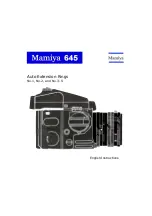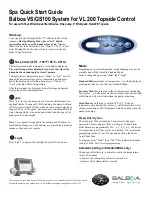
14
D-31 June 2002
Time-Capsule Storage
Only silver-gelatin films conforming to ANSI/PIMA
IT9.1-1998
2
or ISO 18901-1999 should be used
for time capsules or sealed in cornerstones of
buildings. Film intended for this kind of storage
should be conditioned to a low relative humidity
(20-30% is recommended for acetate-base films)
in a conditioning room or chamber. During
conditioning, air should be circulated against
both roll surfaces. Conditioning times should be at
least two weeks for 16 mm film and four weeks for
35 mm film. This conforms to ANSI/PIMA IT9.11-
1998 and ISO 18911-1999.
5
During conditioning, the film should be in the form
intended for final storage (wound on itself or a
glass rod, not on a conventional core or reel)
because the possibility of rapid moisture change
makes it inadvisable to rewind the film after
conditioning. The capsule should be loaded in the
conditioning chamber, if possible; if not, the film
should be transferred immediately to the capsule
and sealed tightly.
The capsule should be a stainless steel cylinder
gasketed cover. When there is more than one roll
of film, it is a good idea to separate rolls with
stainless steel disks of the same inside diameter
as that of the capsule. Cores, reels, or wrapping of
any kind should not be included; only the film itself
should be put into the capsule.
Handling and Filing
Film Records
Well-planned filing systems and proper handling
of film records are important in the storage of
records. The custodian should set up safeguards
against loss or misplacement of valuable records
and also make sure that the methods of filing and
handling do not add unnecessary wear to the
records. When films must be used, duplicates
should be made and originals retained in storage.
Interfiling
Microfilm may be subject to interactions when
stored with films of different generic types
(e.g., diazo and silver-gelatin). Do not wind
different generic film types on the same roll or
store them in the same container. Diazo and
silver-gelatin microfilms should be stored
separately before and after processing.
Diazonium salt gases emitted from Diazo
microfilm (pre- and post-process) can be
detrimental to silver-gelatin microfilm.
Continual handling of film, even under favorable
conditions, causes some wear, but wear can be
accelerated greatly by certain factors which can
be controlled. Scratching occurs when film is dirty
or equipment is poorly maintained or wrongly
used. “Cinching” causes scratches and occurs
when film is made to slide layer on layer
(e.g., when the end of a loose roll of film is pulled).
Tearing and fingerprinting occur when equipment
and handling methods are not suitable.
Remove dirt from film by wiping with a lintless
fabric pad moistened with film cleaner or its
equivalent. Carry out cleaning operations in an
atmosphere of about 50% relative humidity to
minimize the possibility that the film will become
electrostatically charged and attract dust particles.
Another proven method for removing foreign
matter from film is the use of Particle Transfer
Roller (PTR) technology. These rollers are a
polyurethane material whose tackiness and
cushiness pick up dust, hair, and other unwanted
material from a continuous moving film surface.
These rollers can be mounted in-line with most
film operations. They can be cleaned easily with
warm water and mild soap. For more information
about Particle Transfer Roller technology call
FPC, Inc., (an Eastman Kodak Company)
at 1-323-468-5774 or contact your local
Kodak Representative.
Cleanliness of the work space is essential to
success in these operations. Static discharge
devices are available for use when handling film
which has been in dry storage. Alternatively, film
can be conditioned to a higher relative humidity
before cleaning and then reconditioned to the
original low relative humidity. Other suggestions
for improving handling operations can be found in
Eastman Professional Motion Picture Films
20
and
The Book of Film Care.
22






































